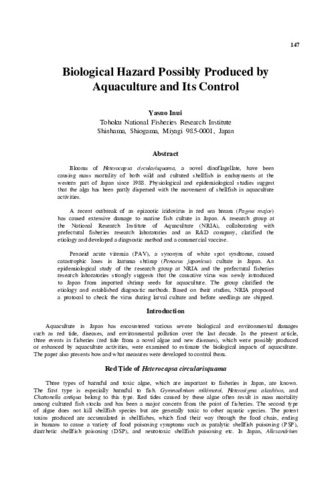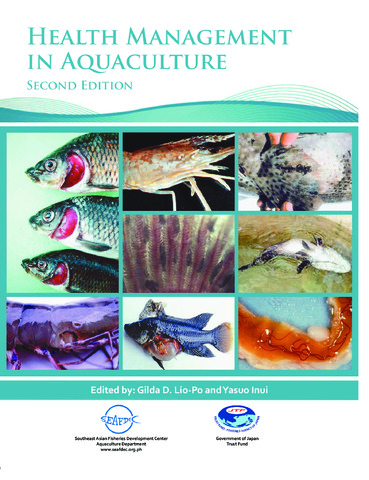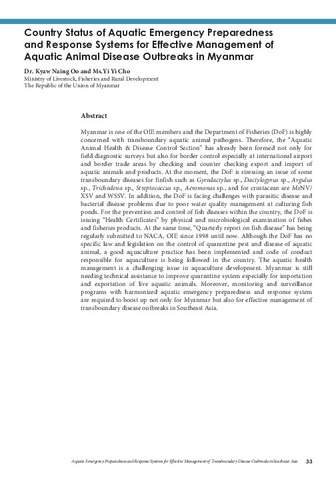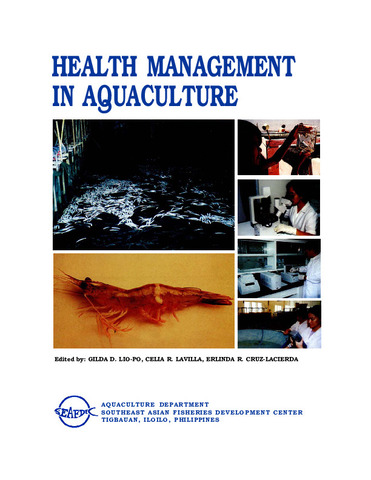Biological hazard possibly produced by aquaculture and its control
Share
Abstract
Blooms of Neterocapsa circularisquama, a novel dinoflagellate, have been causing mass mortality of both wild and cultured shellfish in embayments at the western part of Japan since 1988. Physiological and epidemiological studies suggest that the alga has been partly dispersed with the movement of shellfish in aquaculture activities.
A recent outbreak of an epizootic iridovirus in red sea bream (Pagrus major) has caused extensive damage to marine fish culture in Japan. A research group at the National Research Institute of Aquaculture (NRIA), collaborating with prefectural fisheries research laboratories and an R&D company, clarified the etiology and developed a diagnostic method and a commercial vaccine.
Penaeid acute viremia (PAV), a synonym of white spot syndrome, caused catastrophic loses in kuruma shrimp (Penaeus japonicus) culture in Japan. An epidemiological study of the research group at NRIA and the prefectural fisheries research laboratories strongly suggests that the causative virus was newly introduced to Japan from imported shrimp seeds for aquaculture. The group clarified the etiology and established diagnostic methods. Based on their studies, NRIA proposed a protocol to check the virus during larval culture and before seedlings are shipped.
Suggested Citation
Inui, Y. (2001). Biological hazard possibly produced by aquaculture and its control. In L. M. B. Garcia (Ed.), Responsible Aquaculture Development in Southeast Asia. Proceedings of the Seminar-Workshop on Aquaculture Development in Southeast Asia organized by the Aquaculture Department, Southeast Asian Fisheries Development Center, 12-14 October 1999, Iloilo City, Philippines (pp. 147-156). Tigbauan, Iloilo, Philippines: Aquaculture Department, Southeast Asian Fisheries Development Center.
Subject
Collections
- ADSEA '99 [21]
Related items
Showing items related by title, author, creator and subject.
-
Health management in aquaculture
Lio-Po, Gilda D.; Inui, Yasuo (Aquaculture Department, Southeast Asian Fisheries Development Center, 2010-07)A textbook on diseases of cultured warmwater fish and shrimps in the Philippines. Eleven chapters cover essential information on the basic principles of disease causation, major diseases of cultured fish and crustaceans, ... -
Country status of aquatic emergency preparedness and response systems for effective management of aquatic animal disease outbreaks in Myanmar
Oo, Kyaw Naing; Cho, Yi Yi (Aquaculture Department, Southeast Asian Fisheries Development Center, 2019)Myanmar is one of the OIE members and the Department of Fisheries (DoF) is highly concerned with transboundary aquatic animal pathogens. Therefore, the Aquatic Animal Health & Disease Control Section has already been ... -
Health management in aquaculture
Lio-Po, Gilda D.; Lavilla, Celia R.; Cruz-Lacierda, Erlinda R. (Aquaculture Department, Southeast Asian Fisheries Development Center, 2001)A textbook on diseases of cultured warmwater fish and shrimps in the Philippines. Eleven chapters cover essential information on the basic principles of disease causation, major diseases of cultured fish and crustaceans, ...





